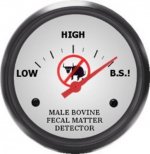garb55
New member
Back in 2008 I tried doing a wheelie with my GS Sm5
I sat on the back seat to get traction and counter the front end weight
I only was able to get the front wheels 2 inches off the ground before the nanny shut me down
I will tell you when you see that 5 ft. wide front end begin to come up it is a little [no A Lot ]scary
I sat on the back seat to get traction and counter the front end weight
I only was able to get the front wheels 2 inches off the ground before the nanny shut me down
I will tell you when you see that 5 ft. wide front end begin to come up it is a little [no A Lot ]scary

















